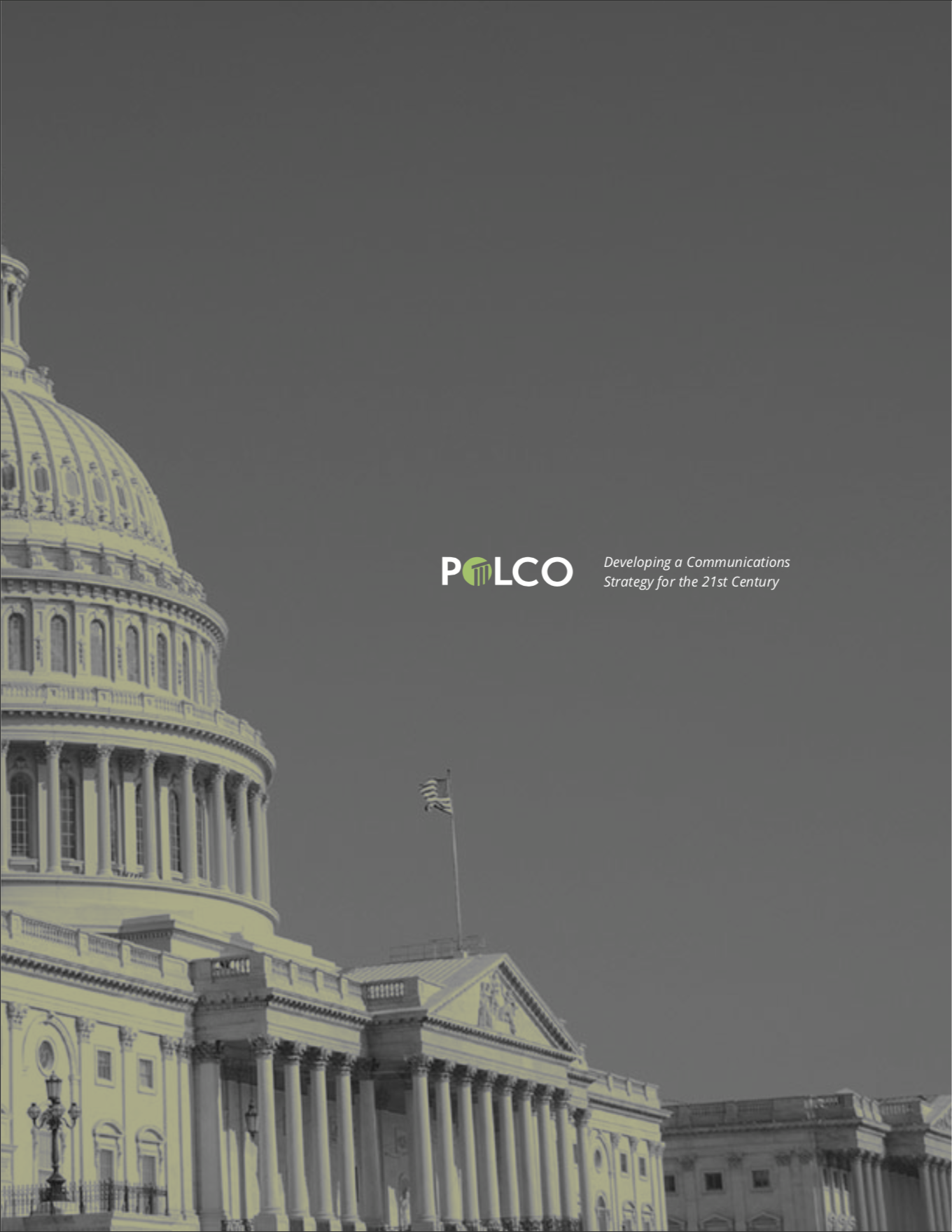10 Tips to Level-Up Your City’s Communication Strategy
By Polco on July 7, 2021

Every local government needs a robust communication strategy to engage its community.
The public expects transparency from all levels of government. Most residents also expect access to information about their community, especially from their local governments. These expectations mean city leaders must be proactive in information dissemination.
Some of the biggest local governments in the country have communication specialists. Some smaller ones do not have specialists or even a comprehensive communication strategy. The first important step is to acknowledge where your department is. When you do, it becomes easier to identify ways to level up.
The Changing Communication Landscape
About three decades ago, the most sophisticated municipal communication teams sent press releases by fax.
Today, the communication landscape has changed so much that faxing is no longer widely used, even for businesses. Many younger adults know little or nothing about faxing.
To effectively communicate with their community, local governments must use modern mediums of communication. Your city's communication strategy must be hinged on engagement, which is only achieved when you use the right modern platform.
Let’s be clear here – engaging your community effectively shouldn’t be rocket science. You do not need an advanced degree in mass communications to get it right. The key to engagement and efficient communication is developing an effective strategy.
10 Tips to Develop an Efficient Communication Strategy for Your City
Are you hoping to develop or modify your city’s communication strategy to meet the needs of your community? Here are ten tips that can help any government communicator:
1. Audit Your Current Communication Strategy
The first step you can take to level up your city's communication is to audit your current strategy. It is always easier to build when you know exactly where you stand.
A thorough audit of your strategy will let you know the strengths and weaknesses. Knowing the situation on the ground is also necessary to engender long-term understanding and support.
2. Define Your Communication Objectives
It is practically impossible to develop an efficient strategy without clear objectives. Your city’s communication objectives will significantly influence the other elements of the strategy. You need to be clear about what is needed before finding ways to achieve it.
Make sure your objectives are clear, specific, and measurable. They should be concrete as well— though you can and should adjust strategies based on situations and results. Of course, the communication objectives must be in line with the overarching local government goals.
3. Work With the Vision and Values of Your Local Government
Every local government has visions and values. These must significantly influence your communication style, so you have to factor them into your strategy. The vision and values of your organization will help you understand the opportunities and challenges you can address.
Working with a clear vision and values will also let you set the right tone for communication. One of the primary goals of engaging with your community is to promote transparency. So your outreach must be in line with what the local government represents.
4. Identify Your Key Audiences
Your constituents are your audiences – that’s a known fact. But how well do you know your constituents? You don’t want to lump every resident of your community into a single audience group.
Survey research and census data over the last couple decades shows that U.S. communities are more diverse than ever. And different groups within a community have different needs and interests. So your digital communication must segment different demographic and regional groups into multiple audiences. This lets you get the right messages to the right people (who will care), at the right times, and in the right channels.
The best way to understand your constituents more is to survey them. Then, use those survey results to help divide them into different audiences so that your messages will resonate perfectly with each group and reach them where they are. When you understand your audiences better, you can segment the most important group for a project, an opportunity, a challenge, or even a crisis. It will be a boost to your communication efficiency.
5. Take Advantage of Exciting or Critical Times
You should design your communication strategy to take advantage of exciting or critical times because these are the best times to get your constituents' attention. People may not seek out messages from their local governments when everything is moving smoothly. In a critical time, however, most people will want, expect, and look to hear from the government.
One way to take advantage of exciting or critical times is to ask your audiences to subscribe to receive messages from the city. Let them understand that in addition to visiting the website to search for information, they can get the latest updates delivered directly to their inboxes (or even their text messages).
6. Integrate Communication and Service Delivery
Another wonderful way to get your constituents engaged is to combine service delivery with efficient communication. Some of the most innovative cities don't treat communication as any different from any other public service they offer.
Integrating communication with service delivery can be as simple as bringing your services to social media, just like this Spanish Town. Update residents about every project and encourage them to report any issue around their community. Conduct surveys for community feedback that will enable you to measure the performance of services and programs. This significantly improves the transparency of your local government. It also creates opportunities for two-way communication, allowing for more genuine public trust.
7. Identify Different Media Channels for Communication
In your city, residents have several apps they use to interact with each other and brands they love. Therefore, social media integration is critical for local government communication. You have to be flexible about this, and you need to choose multiple channels.
You have to be realistic when choosing the different media channels for communication. Think about the strengths of the platforms available to you. Some social media platforms are great for news (e.g., Twitter), some are great for communicating community values (e.g., Facebook). Choose the right channels and share messages across them.
Also, consider the audience segment intended for your message or specific campaign. Then broadcast your message on the platforms that will most likely reach that audience.
Comedian Phil Rosenthal once posted in a Tweet, “18yr old daughter explains, ‘Twitter is for funny things, Instagram is for pretty things, Facebook is for old people things.’” (It’s true, other research shows that Facebook isn’t as popular with teenagers and young-twenty-somethings these days.) So it’s best to research which platforms your message’s intended audiences are using, or simply ask those folks in a survey.
8. Improve Your City’s Listening Skills
Online surveys have made two-way conversation easier. Your city can take advantage of this to engage the community properly. Part of your strategy should be to significantly improve the way your city connects with and listens to residents.
The perspectives and experiences of your constituents are important. And the local government must show that the opinions of residents matter. That alone will encourage most people to speak up and engage for a better community.
9. Inspire Action
Efficient communication is not just about disseminating important information. Engagement is also a measure of efficiency, so you must strive to improve it. Your communication should be aimed at inspiring action.
You can use the conversion trinity to inspire people to take action with your important messages. The trinity includes relevance, value, and call to action. Make sure your messages are relevant and valuable to your audiences. Add a "call to action" button (with language like “Learn More”) to inspire action. Using the conversion trinity is a great way to compel residents to take your surveys.
10. Measure and Iterate
Your communication strategy must include goals and objectives that are measurable. You should measure the results of your strategies and tactics based on these objectives to see if you are making progress.
Depending on the results you get from testing your strategies and measuring the outcomes, you can make changes that can bring better results. Don't be afraid to shake things up a bit. You can pinpoint the effective tactics and the ones that are not so awesome and make necessary changes.
Effective Local Government Communication Strategy Shouldn’t Be a Headache
Effective communication can help city staff and officials achieve so much. It bridges the gap between the people in government and those they serve. It engenders understanding and support that will ultimately improve the lives of residents.
As the communication landscape continues to change, local governments must keep up. And it doesn't take an outreach or marketing genius to create a capable communication strategy for a city or local government.
Implementing the tips discussed here can help you level up your city's communication strategy. You can also get professional help from Polco, a top communication and engagement platform that is designed for local governments.
Polco provides accurate and reliable feedback from your community. It can be the perfect platform for you. Learn More about Polco and what we can help you achieve.
Related Articles
Popular posts
Sign-up for Updates
You May Also Like
These Related Stories

New Case Study Out Now!

December Priorities for City Managers: Start the New Year Strong

